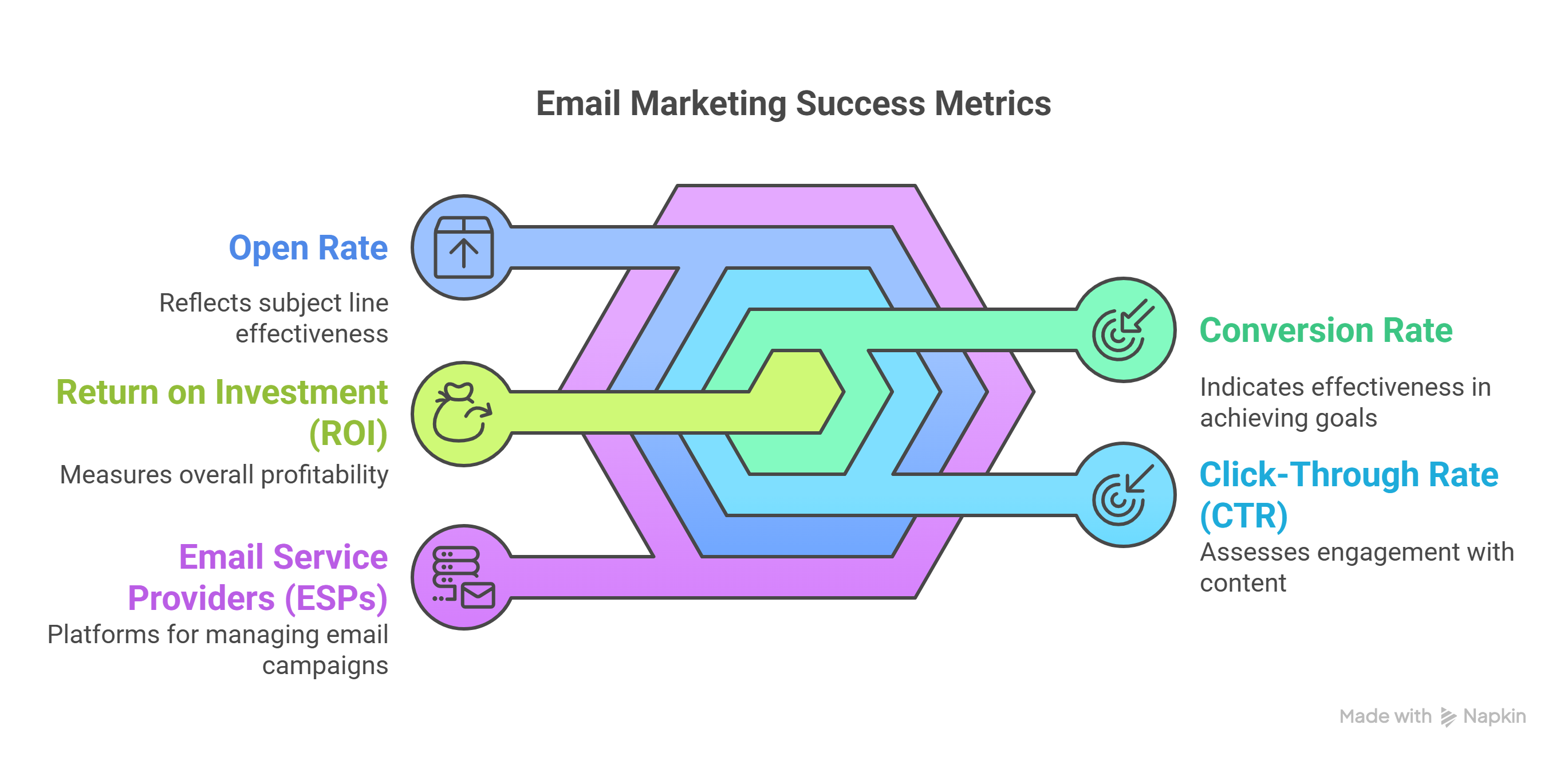Email Marketing Tools & Measuring Success
Choosing the right tools and tracking performance are vital for effective email marketing.
Essential Tools (Email Service Providers - ESPs)
- Purpose: These are the platforms you use to manage your email marketing operations. They handle tasks like storing subscriber lists, designing email templates, sending emails in bulk, setting up automated campaigns (like welcome series), and crucially, tracking how your emails perform.
-
Popular Examples:
- Mailchimp
- Constant Contact
- HubSpot Marketing Hub
- Brevo (formerly Sendinblue)
- ActiveCampaign
- MailerLite
- Real-Life Example: A local bakery uses Mailchimp to manage its customer email list. They design a newsletter template featuring their logo and brand colors, schedule it to send every Friday morning, and use Mailchimp's dashboard to see who opened the email and clicked on the link to their weekly specials page.
Measuring Campaign Performance (Key Metrics)
Tracking these metrics helps you understand what's working and where to improve:
-
Open Rate:
- What it is: The percentage of people who received your email and actually opened it.
- What it indicates: How effective your subject line was at grabbing attention and how much subscribers recognize/trust your brand.
- Example: If 1000 people received your email and 200 opened it, your open rate is 20%. A low open rate might mean your subject lines need work.
-
Click-Through Rate (CTR):
- What it is: The percentage of people who opened your email and clicked on at least one link inside it.
- What it indicates: How relevant and engaging your email content and call-to-action (CTA) were to those who opened it.
- Example: Of the 200 people who opened the email, 20 clicked the "Shop Now" link. Your CTR (based on opens) is 10%. A low CTR might mean your offer wasn't compelling or the CTA wasn't clear.
-
Conversion Rate:
- What it is: The percentage of people who clicked a link in your email and then completed the desired action on your website (e.g., made a purchase, signed up for an event, downloaded a file).
- What it indicates: How effectively your email drove the ultimate business goal. This is often the most important metric for ROI.
- Example: Of the 20 people who clicked the "Shop Now" link, 2 actually completed a purchase. Your conversion rate (based on clicks) is 10%.
-
Bounce Rate:
- What it is: The percentage of emails sent that could not be delivered. Hard bounces are permanent failures (invalid email address). Soft bounces are temporary issues (full inbox, server down).
- What it indicates: The health and quality of your email list. High hard bounce rates mean your list needs cleaning or your sign-up process might be flawed.
- Example: If 10 emails out of 1000 bounced, your bounce rate is 1%. Consistently high hard bounces should be investigated.
-
Unsubscribe Rate:
- What it is: The percentage of recipients who clicked the "unsubscribe" link in your email.
- What it indicates: Can signal issues with content relevance, sending frequency (too often?), or that subscriber expectations weren't met. A small number of unsubscribes is normal, but spikes are worth investigating.
- Example: If 5 people out of 1000 unsubscribed after an email, the unsubscribe rate is 0.5%. A sudden jump to 3% might indicate the email content missed the mark for many subscribers.
-
List Growth Rate:
- What it is: How quickly your email list is expanding over time (new subscribers minus unsubscribes).
- What it indicates: The effectiveness of your list-building efforts.
- Example: If you started the month with 1000 subscribers and ended with 1100 (after accounting for unsubscribes), your list grew by 100 subscribers or 10%.
-
Return on Investment (ROI):
- What it is: Measures the total revenue generated from an email campaign compared to the total cost of running it (ESP fees, time spent, ad costs if applicable).
- What it indicates: The overall profitability and financial success of your email marketing efforts.
-
Example: If an email campaign cost $50 to run (time + tools) and directly generated $500 in sales (tracked via links/codes), the ROI is
($500 - $50) / $50 = 9, or 900%.

No Comments